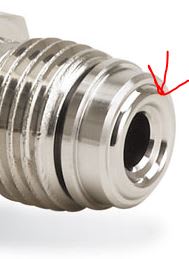Tangent plane modifier shown on the bead (the curved surface)-see attached file.
Designer decided to use T modifier with either profile or perpendicularity. My scheme is incomplete by intent and I would like to get your opinion about the validity of T modifier on curved surfaces in general. Leave alone that for the part shown the datum scheme is not depicted as a functional one, I am just trying to get the legality aspect of it (T modifier)
We know it is legal (per Y14.5-2009) to use T on profile and /or perpendicularity however we are not sure about using it on the shown surface (which is not a plane).
There is a statement in 2009 (6.5 Tangent Plane page 103 :” Where a tangent plane symbol is specified with a geometric tolerance, the flatness of the toleranced feature is not controlled by the geometric tolerance.” )
Is this enough to forbid usage on curved surfaces? Or engineer does not think so.
What is your opinion?
Monday = fun day
![[bigsmile] [bigsmile] [bigsmile]](/data/assets/smilies/bigsmile.gif)
Designer decided to use T modifier with either profile or perpendicularity. My scheme is incomplete by intent and I would like to get your opinion about the validity of T modifier on curved surfaces in general. Leave alone that for the part shown the datum scheme is not depicted as a functional one, I am just trying to get the legality aspect of it (T modifier)
We know it is legal (per Y14.5-2009) to use T on profile and /or perpendicularity however we are not sure about using it on the shown surface (which is not a plane).
There is a statement in 2009 (6.5 Tangent Plane page 103 :” Where a tangent plane symbol is specified with a geometric tolerance, the flatness of the toleranced feature is not controlled by the geometric tolerance.” )
Is this enough to forbid usage on curved surfaces? Or engineer does not think so.
What is your opinion?
Monday = fun day
![[bigsmile] [bigsmile] [bigsmile]](/data/assets/smilies/bigsmile.gif)

